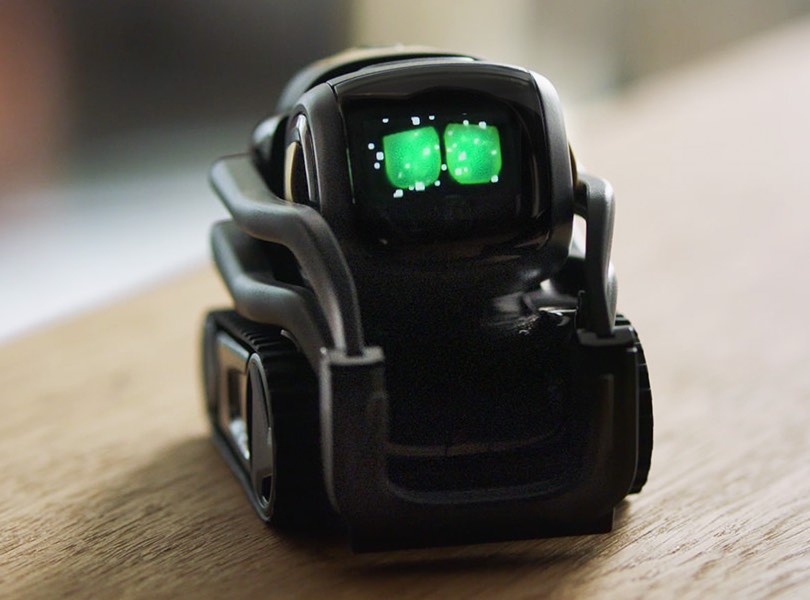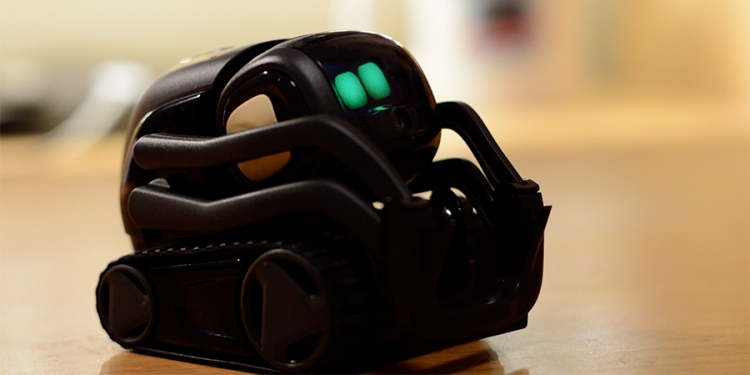

It gets surprised when its drop sensors detect the table’s edge. The most amazing feature is its capacitive touch sensor on backpack when the owner pets his backpack, it shows the emotion of relaxation, like a real-life pet does. It will rotate to an angle when it detects a sound wave. For instance, when it identifies its owner, it shows the feeling of excitement. In addition, its sensors simulate its emotion engine showing multiple feelings, including happy, sad, curious, or any other emotions. Vector is coupled with an infrared laser scanner to track the distance between objects and to map the environment while moving. The autonomous design gives it access to various sensors such as the integrated HD camera, which makes it to see the room with a 120-degree-wide field view and identify people and objects with motion detection. Moreover, Simulation and Localization Mapping (SLAM) is achieved with the help of time of flight (ToF) laser distance sensor to the front, assisting it to detect obstacles. The edge-detection sensors help it to avoid obstacles and stay at the table without falling. It has the four-microphone array that enables Vector to interpret the world by listening and detecting the source of it.

Vector was tested through many prototype iterations to check if it could move on wheels, or treads, its way of manipulating objects, how the eyes would be shaped, battery placements, gear position, and many more small tweaks. Like any flagship smartphone, Vector can also receive improvement upgrades to its software.Īfter setting up the Vector with a smartphone app, an eye contact and the owner’s voice will be enough to have an exciting interaction with this pet robot.įollowing are the key stages, which brought Vector’s advanced tech to life, consisting of nearly 700 parts placed perfectly with precision. The microphones comprise of a 4-Mic Array, having multi-beam forming, direction finding, and noise cancellation technology. Along with cloud voice recognition, Vector offers intent matching as well as knowledge graph information access, too. Vector also has a deep learning algorithm which provides real-time CNN architecture for things like person detection, novelty detection, and object classification. Supported by a powerful wireless connectivity, Vector has Wi-Fi and BLE with features like privacy infrastructure, encryption, always connected, and robust security. The vision comprises an HD camera with a 120-degree ultra-wide-angle view. Vector is a life-like robot framed on a 1.2-GHz Qualcomm Snapdragon 200 processing platform.

This article explains the most advanced home assistant, Vector Robot, the latest robot from Anki, which can see, hear, think, communicate, and even feel the touch of its master. They are smart, but the lack of movement and expressions makes them a little bit traditional. The major problem with them is that they are only stationary in one place, accepting one’s commands and answering accordingly, which makes them quite limited. Current assistants rolled out by Amazon, Google, and Microsoft are all just smart speakers. As predicted, it happened and today, smart home assistants are grabbing a significant stake in the market. Long ago, scientists had predicted that robots would be living in people’s houses as the family’s pet, helping everyone in the house.


 0 kommentar(er)
0 kommentar(er)
